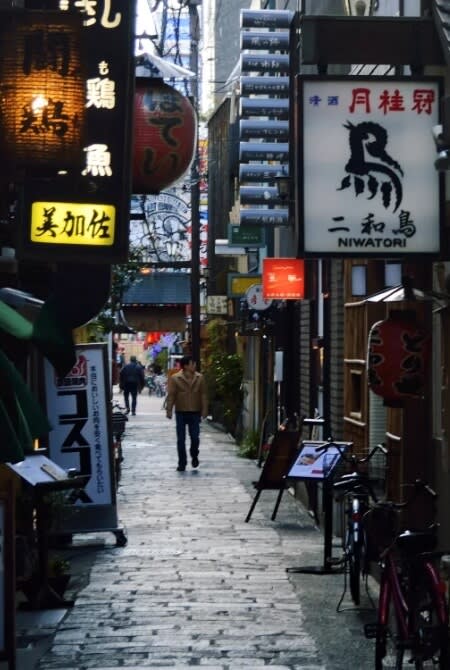Savor the Delicate Flavors of Japanese Cuisine with Chef Yoshihiro Takahashi
Japanese cuisine, or washoku, is crafted with a diverse mix of regional ingredients, age-old techniques, and attention to aesthetic details. Yoshihiro Takahashi, the owner-chef of a long-standing restaurant in Kyoto, talks about what makes Japan’s culinary traditions so special.
-
Yoshihiro Takahashi
Owner-Chef of Hyotei
Yoshihiro Takahashi is the 15th generation owner-chef of Hyotei, a Michelin three-star restaurant. With a history of over 400 years, the establishment is close to Nanzenji Temple in Kyoto’s mountainous Higashiyama district.
Tell us about Hyotei and its signature dish.
Our restaurant was originally in the grounds of Nanzenji Temple, a renowned Zen Buddhist temple founded in the 13th century. We opened over 400 years ago as a tea house, serving as a resting place for visiting pilgrims. In 1837, it started operating as a restaurant. Because of the prime location near such an iconic temple, we have received many dignitaries over the years.
Back then, we used to raise chickens on the grounds, so we were able to harvest freshly-laid eggs—these were served soft-boiled to the customers. This beloved dish has been our signature for centuries.
A lot of effort goes into preparing this dish. The condition of the eggs change according to the season and other factors, so we pay special attention to how we prepare them, from the amount of heat applied to the type of cooking pot. It’s all about precision. The result is a simple dish that accentuates the subtle, natural flavors of the egg. Now, soft-boiled egg is a dish you can find almost anywhere, but back when we first started making it, it was a rarity. We often serve it as part of our platter of seasonal dishes known as hassun, with the egg serving as the centerpiece.

Hyotei’s hassun (mixed seasonal specialties) with soft-boiled egg at the center
What do you value as a chef?
Our specialty is Kyoto kaiseki (traditional multi-course meal), so we heavily incorporate the techniques and customs of Kyoto culinary culture. This entails paying particular attention to the changing of the seasons. The ingredients we use vary greatly not only depending on the season, but the weather trends of that particular year, which can affect supplies. Taking that a step further, even our selection of tableware and utensils change according to the time of year. For example, in summer we bring out glass and aquamarine porcelain to evoke a cool and refreshing feeling, while in winter, we use thick earthenware and wooden items to draw out a sense of warmth.
There is also a special focus on aesthetics and attention to detail. I am conscious of the use of light and shadow, and the balance of portions and color when plating dishes. This is influenced by the Japanese culinary principle of go-mi, go-shoku, go-ho—the rule of five—stating that traditional meals should include all five tastes, the five elemental colors (red, green, yellow, white, black) and five preparation methods (fried, simmered, steamed, grilled, and raw).
Eating is not just about taste—it’s a full sensory encounter. I think fine-tuning each detail can enhance the dining experience.
Our restaurant, like many traditional establishments, works to be eco-friendly, and does not waste any part of the ingredients. For example, we use vegetable scraps to make broth. Since we receive vegetables and fish straight from suppliers, we take no more than what we need and adjust our menu to what is available and in-season.

Yoshihiro Takahashi in his kitchen
Washoku (Japanese cuisine) has been designated a UNESCO Intangible Cultural Heritage. What makes it unique?
Japan is blessed with an incredible variety of ingredients, as we are surrounded by the sea and covered in forestland—we have access to everything from seafood and wild game to herbs and edible wild plants. These ingredients are deeply intertwined with our surrounding environment, terrain, and seasons. I think Japanese cuisine reflects that connection beautifully.
Each type of cuisine has its own distinct characteristics. For example, French food makes clever use of fats and oils, while Chinese food is all about the use of heat and fire. Water is the focal point in Japanese cuisine. Japan has an abundance of easily-accessible fresh water, so our dishes evolved to make full use of it. Dashi is a great example. This broth, usually made with water and bonito flakes or kombu seaweed, is used in a variety of dishes to enhance the flavors. It’s so simple, but cannot be created well unless you have good water.
And since Japan has so much climatic variation from north to south, each area has its own regional specialties made with produce and techniques native to the locality. That’s what makes washoku such an enormous category. I think it’s quite enjoyable to visit different places to taste the variety in flavors and presentation.

Dashi broth, a pillar of Japanese cuisine
What would you recommend to visitors who want to try washoku?
I would definitely recommend trying Kyoto kaiseki, as it embodies a mix of various kinds of regional cuisines, techniques, and ingredients. Kyoto used to be an imperial town, so in its heyday, it received produce from all over the country. Many cooking techniques were pioneered here and for this reason, it has influenced culinary culture all around Japan. The quality still remains excellent. And it’s not just about the food—Kyoto kaiseki encompasses tableware, interior, and ancient customs. It’s a treat for all the senses. Each restaurant has its own interpretation of this culinary tradition, so there are plenty of options. As the price range tends to vary by establishment, you can find one that caters to your budget.
If you’re trying a multi-course kaiseki meal, it’s best to get it with a sake pairing, as I think sake enhances the flavors of the dishes. Sake comes in many kinds of flavors as each region tends to have their own recipe, so it can be great to try it alongside local fare as well. One unique element of sake is that you can drink it both hot and cold. I would definitely recommend visitors to sample different types to find one that best meets their preferences.

Seasonal dishes and tableware
You’ve been involved in initiatives to promote Japanese cuisine. Can you tell us more about them?
Working at Hyotei, I noticed that many Japanese people were starting to lose touch with their culinary customs—they seemed unfamiliar with the proper use of chopsticks or didn’t know how to hold the bowl properly. Initially, I wanted to remind Japanese people of our rich culinary traditions, but then later decided to take it a step further and share it with people abroad. That’s why I became involved with the Japanese Culinary Academy, where we make efforts to spread awareness about and showcase the appeal of Japanese cuisine. These initiatives also gave me a chance to interact with and learn from chefs abroad.
Japanese cuisine has been shaped through the centuries, taking inspiration from nature and the four seasons. I hope for international visitors to savor the diversity of ingredients we have on offer, experience these cherished customs for themselves, and embrace the vibrant heritage of washoku.

Hyotei, located near Nanzenji Temple

Hyotei's sign
Recommended article
-
Food & Drink in Japan
Find out Food & Drink in Japan. Experience Japan's rich food and drink culture in its izakaya, restaurants, ryokan and ryotei
Learn More
-
Dining in Japan
You can find a lot more than sushi and ramen in Japan. Try these authentic dishes, from elegant kaiseki cuisine to simple soba noodles and bento boxes
Learn More
-
Japanese Food Etiquette Guide
Japanese food can range from elegant kaiseki to casual ramen, but there are rules and manners to follow, from slurping your noodles to using chopsticks.
Learn More











